
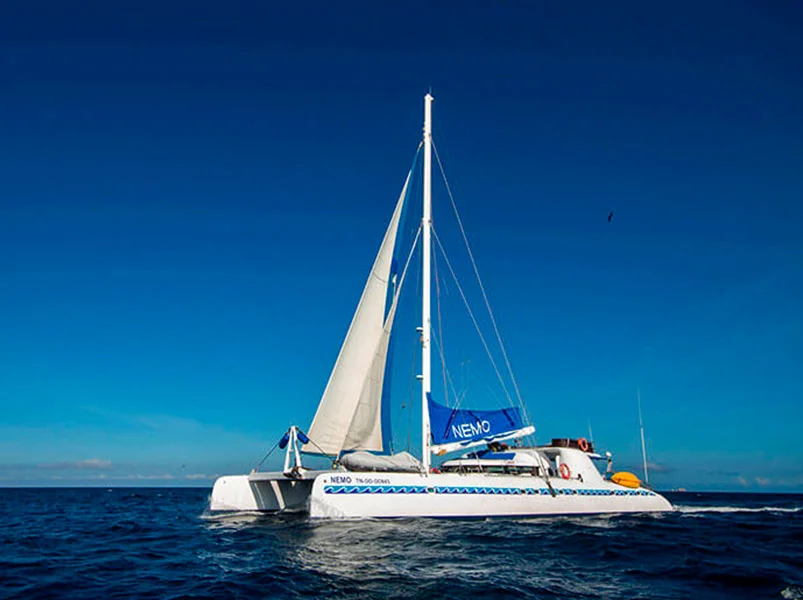
Experience an unforgettable 8-day Galapagos cruise exploring islands like North Seymour, San Cristobal, and Santiago. Highlights include snorkeling with sharks at Kicker Rock, encounters with sea lions at Gardner Bay, and seeing giant tortoises in Santa Cruz's highlands. Perfect for nature and wildlife enthusiasts!
8 Day Galapagos Itinerary
Day 1: Baltra Island & North Seymour Island
Arrival to the airport in Baltra, reception by the cruise guide and transfer to the yacht.
Dry landing. Nature walk in North Seymour.
The trail is approximately 2 km (1.25 miles) in length crossing the inland of the island and exploring the rocky coast. Along the way the trail passes colonies of Blue-Footed Boobies and Magnificent Frigatebirds. The Magnificent Frigatebird, a large black bird with a long wingspan, and a hooked beak, is extremely fast and has excellent vision. Frigatebirds are known for the large red pouch on their necks. Boobies and Frigates share an interesting relationship. Sharing the same nesting area on North Seymour Blue-Footed Boobies nest on the ground making their nests from the twigs of the Palo Santos Trees, while the Magnificent Frigatebird nests just above them in the saltbushes.
Guide briefing. Welcome cocktail. Dinner service and navigation to San Cristobal Island.
North Seymour Island
Lunch service and navigation to Seymour Island, North of Baltra.Dry landing. Nature walk in North Seymour.
The trail is approximately 2 km (1.25 miles) in length crossing the inland of the island and exploring the rocky coast. Along the way the trail passes colonies of Blue-Footed Boobies and Magnificent Frigatebirds. The Magnificent Frigatebird, a large black bird with a long wingspan, and a hooked beak, is extremely fast and has excellent vision. Frigatebirds are known for the large red pouch on their necks. Boobies and Frigates share an interesting relationship. Sharing the same nesting area on North Seymour Blue-Footed Boobies nest on the ground making their nests from the twigs of the Palo Santos Trees, while the Magnificent Frigatebird nests just above them in the saltbushes.
Guide briefing. Welcome cocktail. Dinner service and navigation to San Cristobal Island.
Meals Included: Lunch / Dinner
Day 2: San Cristobal Island: Kicker Rock, Lobos Island & Witch Hill
Breakfast service. Dry landing. Nature walk and more wildlife watching. Deep water snorkeling.
One of the first sites visited by Charles Darwin, Cerro Brujo is a beautiful white sand beach where Brown Pelicans, Blue‐Footed Boobies, sea lions, and marine iguanas are all found. An onshore version of nearby Kicker Rock, Cerro Brujo is a very striking, eroded tuff cone.
There is no landing at Kicker Rock. Also known as León Dormido these rocks are located off the coast of San Cristobal. It is the remains of a lava cone eroded by the sea, the two vertical rocks rising 500 feet from the ocean form a small channel that is navigable by small boats. This natural monument has become a favorite sight for cruises due to the many Tropicbirds, Frigates and Boobies that fill the surrounding air. Beneath the sea the nearly crystal waters offer a brilliant show of colorful tropical fish and invertebrates.
Guide briefing. Dinner service and navigation to Espanola Island
Kicker Rock
One of the best spots for snorkeling, Kicker Rock or Leon Dormido is an amazing rock formation near San Cristobal Island.This amazing landmark located about an hour and a half to the north east of Puerto Baquerizo Moreno, Kicker Rock / Leon Dormido is a remnant of a vertical tuff cone formation, rising almost 153 meters (500 feet) from the ocean.The erosion has given the rock its characteristic shape, which some see as a shoe, hence the name Kicker Rock. Others see it as a sleeping sea lion or Leon Dormido in Spanish.While we snorkel around Kicker Rock we can spot sea turtles, marine iguanas, rays, Galapagos sharks, tropical fish and if luck is on our side we can even see hammerhead sharks. Besides enjoying the underwater view, we can usually see blue-footed boobies, masked boobies and frigatebirds on the cliffs as well as sea lions along the shore.This famous snorkel tour also goes to one beach that may be Puerto Grande, Cerro Brujo or Manglecito. These alternatives vary depending on the departure day of this Galapagos tour.Lobos Island
Lobos Island, as its name suggests is famous for its population of sea lions and fur sea lions. You will also encounter nesting grounds for the great Frigatebird and a small number of blue footed boobies. Breeding center, where will be explained, in a simple manner, the natural phenomena that created the Galapagos Islands. That is the geology and the series of natural processes, such as volcanic eruption and marine current locations that have led to the amazing islands that you are now visiting.Witch Hill
Lunch service and navigation to Cerro Brujo. Panga boat exploration rides. Wet landing. Nature walk*. Deep water snorkeling.One of the first sites visited by Charles Darwin, Cerro Brujo is a beautiful white sand beach where Brown Pelicans, Blue‐Footed Boobies, sea lions, and marine iguanas are all found. An onshore version of nearby Kicker Rock, Cerro Brujo is a very striking, eroded tuff cone.
There is no landing at Kicker Rock. Also known as León Dormido these rocks are located off the coast of San Cristobal. It is the remains of a lava cone eroded by the sea, the two vertical rocks rising 500 feet from the ocean form a small channel that is navigable by small boats. This natural monument has become a favorite sight for cruises due to the many Tropicbirds, Frigates and Boobies that fill the surrounding air. Beneath the sea the nearly crystal waters offer a brilliant show of colorful tropical fish and invertebrates.
Guide briefing. Dinner service and navigation to Espanola Island
Meals Included: Breakfast / Lunch / Dinner
Day 3: Española Island: Osborn Islet, Gardner Islet, Gardner Bay & Suarez Point
Breakfast service. Dry landing. Nature walk on Espanola Island Suarez Point.
The islet was named after Henry Fairfield Osborn, a true lover of nature and animal species. William Beebe worked for him and named the islet after traveling to discover Galapagos.
There are many different schools of fish and other animal species, such as parrotfish, sea lions, butterfly fish, corals, green pencil urchins and many other colorful fish. This site is also great for snorkeling and swimming around the abundant marine life, as its waters are very calm.
Lunch service. Panga boat exploration rides to Gardner Bay. Wet landing. Gardner Islet, Osborn Islet. Nature walk. Deep water snorkeling. Swimming.
Guide briefing. Dinner service and navigation to Floreana
Osborn Islet
Osborn Islet is located to the southeast of Gardner Bay, near Española Island. Since landing is not allowed on this site, the visit consists of a tranquil panga ride that will allow us to enjoy the panoramic views and the many species that inhabit the place.The islet was named after Henry Fairfield Osborn, a true lover of nature and animal species. William Beebe worked for him and named the islet after traveling to discover Galapagos.
There are many different schools of fish and other animal species, such as parrotfish, sea lions, butterfly fish, corals, green pencil urchins and many other colorful fish. This site is also great for snorkeling and swimming around the abundant marine life, as its waters are very calm.
Gardner Bay
Gardner Bay is a 45‐minute boat ride from Suarez Point. It has a white sand beach and there is a small colony of sea lions. The possibilities for swimming or scuba diving are excellent here. Visitors find migrant, resident, and endemic wildlife including brightly colored Marine Iguanas, Española Lava Lizards, Hood Mockingbirds, Swallow Tailed Gulls, Blue Footed and Masked Boobies, Galapagos Hawks, a selection of Finch, and the Waved Albatross. Snorkel and go on a panga ride at Gardner Islet, and at Osborn Islet snorkel once more.Lunch service. Panga boat exploration rides to Gardner Bay. Wet landing. Gardner Islet, Osborn Islet. Nature walk. Deep water snorkeling. Swimming.
Suarez Point
Suarez point is located on the western tip of Española and it offers great wildlife viewing of such species as Sea Lions, Sea Birds and the largest Marine Iguanas of Galapagos. This is one of the best sites in the Galapagos. The amount of wildlife is overwhelming. Along the beach there are many Sea Lions and large, colorful Lava Lizards and Marine Iguanas. As you follow the trail to the cliff's edge Masked Boobies can be found nesting among the rock formations. After a short walk down to a beach and back up the other side Blue‐Footed Boobies are seen nesting just off the trail.Guide briefing. Dinner service and navigation to Floreana
Meals Included: Breakfast / Lunch / Dinner
Day 4: Floreana Island: Cormorant Point, Champion Islet, Post Office Bay & Mirador De La Baronesa
Breakfast service. Visit to Floreana Island: Cormorant Point, Champion Islet, Baroness Viewpoint. Wet landing. Nature walk*. Possible activities: shallow water snorkeling, kayaking, panga boat exploration rides.
In 1793 British whalers established the Post Office Barrel to send letters to and from England. This tradition has continued over the years, and even today visitors may drop off and pick up letters, without stamps, to be carried to far destinations. This is one of the few visitor sites that is visited for its human history. Whaling Captain James Colnett established the wooden post barrel in the early 1793. At the time whaling was a big industry, ships were typically gone for 2 years at a time. The Galapagos Islands were a frequent stop for these ships. Outbound ships would drop off letters after rounding the cape and the ships returning home would mail them. Over the years thousands of ships have stopped to send and receive mail at Post Office Bay. Many have posted a sign of driftwood or other materials memorializing their visit. This is the only area in the Galapagos were graffiti is still acceptable.
Arriving at Post Office Bay you will land on a brown sand beach, passing the sea lions lying in the sun. At the post barrel the guide will pull a handful of letters for the group. Continuing the tradition, the letters are brought home with the traveler and then mailed to the addressee. Visitors also have the opportunity to send letters of their own. There are also the remains of a Norwegian Fishing Village a commercial fishing operation established in 1926 and abandoned a couple of years later. The group of Norwegians arrived with dreams of riches started a fishing and canning operation on $900 each.
Mirador de la Baronessa The tough Galapagos life and a few misfortunes had them abandon their dreams. This site is especially attractive because aside from its impressive scenic beauty, it has a history. It is known by letters that Baroness Eloisa von Wagner (referring to “The Galapagos Affair” by John Treherne) loved this place, where she spent several hours where she could acquire knowledge of vessels approaching the island. Within walking distance (30 m) are the ruins of what is known as the House of the Baroness.
Time and weather permitting you may have the opportunity to snorkel again from the beach.
Guide briefing. Dinner service and navigation to Santa Cruz
Cormorant Point
The visit to Cormorant Point offers two contrasting beaches. Arriving on shore you will encounter a green sand beach (the green sand is caused by the olivine crystals derived silicates or magnesium and iron). From here you will follow the trail leading to a lagoon where Pink Flamingoes and other shore birds can be seen in the distance making their home. If you look closely at the mud of this lagoon, there appears to be 'cracks' in the mud. These cracks are not caused from dryness but are actual flamingo footpaths. This is also a good spot for seeing Large‐Billed Flycatchers, Small‐Ground Finches, Medium‐Ground Finches or Cactus Finches. The walk continues to another beach on the other side made of fine white sand particles known as "Flour Beach". In the waters Ghost Crabs and Rays can be seen swimming. Time and weather permitting you may even go for a swim or a snorkel. Other activities include a panga ride to Champion Point and kayaking at Baroness Viewpoint.Post Office Bay
Lunch service. Panga boat ride to Post Office Bay. Wet landing. Nature walk. Snorkeling from the beach.In 1793 British whalers established the Post Office Barrel to send letters to and from England. This tradition has continued over the years, and even today visitors may drop off and pick up letters, without stamps, to be carried to far destinations. This is one of the few visitor sites that is visited for its human history. Whaling Captain James Colnett established the wooden post barrel in the early 1793. At the time whaling was a big industry, ships were typically gone for 2 years at a time. The Galapagos Islands were a frequent stop for these ships. Outbound ships would drop off letters after rounding the cape and the ships returning home would mail them. Over the years thousands of ships have stopped to send and receive mail at Post Office Bay. Many have posted a sign of driftwood or other materials memorializing their visit. This is the only area in the Galapagos were graffiti is still acceptable.
Arriving at Post Office Bay you will land on a brown sand beach, passing the sea lions lying in the sun. At the post barrel the guide will pull a handful of letters for the group. Continuing the tradition, the letters are brought home with the traveler and then mailed to the addressee. Visitors also have the opportunity to send letters of their own. There are also the remains of a Norwegian Fishing Village a commercial fishing operation established in 1926 and abandoned a couple of years later. The group of Norwegians arrived with dreams of riches started a fishing and canning operation on $900 each.
Mirador de la Baronessa The tough Galapagos life and a few misfortunes had them abandon their dreams. This site is especially attractive because aside from its impressive scenic beauty, it has a history. It is known by letters that Baroness Eloisa von Wagner (referring to “The Galapagos Affair” by John Treherne) loved this place, where she spent several hours where she could acquire knowledge of vessels approaching the island. Within walking distance (30 m) are the ruins of what is known as the House of the Baroness.
Time and weather permitting you may have the opportunity to snorkel again from the beach.
Guide briefing. Dinner service and navigation to Santa Cruz
Meals Included: Breakfast / Lunch / Dinner
Day 5: Santa Cruz Island: Highlands & Charles Darwin Station
Highlands
Breakfast service. Dry landing. Visit to the private estate.This reserve offers you one of the best possibilities to see the huge turtles of Santa Cruz Island in their natural habitat. You can observe them from very close.Charles Darwin Station
Lunch service. Dry landing. Visit to Charles Darwin Scientific Station and Breeding Center. An excellent way to begin learning about the islands, their origin and formation. You will learn about how the Galapagos turtles are raised and meet Jorge, the famous solitary turtle. The Scientific Station has its own beach that receives many visitors on weekends.Guide briefing. Dinner service and navigation to Santa fe
Meals Included: Breakfast / Lunch / Dinner
Day 6: Santa Fe Island & South Plaza Island
Breakfast service. Navigation to Santa Fe. Wet landing. Nature walk. Deep water snorkeling.
Lunch service. Dry landing. Visit to South Plaza. Nature walk*. Deep water snorkeling.
Guide briefing. Dinner service and navigation to Chinese Hat
Santa Fe Island
Santa Fe Island is home to one of the most beautiful coves in all the Galapagos. It is located in the southeastern part of Galapagos, 2 1/2 hours from Santa Cruz and 3 hours from San Cristobal. Santa Fe was formed from an uplift (rather than a volcano) giving the island a relatively flat surface rather than the typical conical shape of the other islands. Visits to Santa Fe begin with a panga boat ride across the lovely turquoise lagoon. Once ashore you are brought into contact with one of the many sea lion colonies in the Galapagos. Bulls compete for the right of beach master while cows lounge in the sun. It is quite a fascinating sight! The loop trail around the island leads past the salt bushes where Galapagos Hawks can be approached easily. Santa Fe is home to endemic Land Iguanas. These iguanas are the largest in the islands and they are beige to chocolate brown in color and resemble small dinosaurs. Reaching the summit there is a stunning view of the cove beneath.Lunch service. Dry landing. Visit to South Plaza. Nature walk*. Deep water snorkeling.
South Plaza Island
Your visit to South Plaza begins with a dry landing. The rocky trail circumnavigates the island displaying the combination of dry and coastal vegetation zone. South Plaza has one of the largest populations of Land Iguanas in the Galapagos. The iguanas seem to be everywhere once you land. These larger than average yellow‐brown land iguanas feed on the fruit and pads of the prickly pear cactus. South Plaza is also home to Marine Iguanas living along the coast and a Hybrid Iguanas whose fathers are Marine Iguanas and mothers are Land Iguanas. As the walk continues along the sea cliffs Swallow‐tailed Gulls, Frigatebirds, Audubon Shearwaters, Red‐billed Tropicbirds, Brown Pelicans, Blue‐Footed and Masked Boobies are frequently seen. Beneath along the shore a colony of Bachelor Sea Lions can be seen.Guide briefing. Dinner service and navigation to Chinese Hat
Meals Included: Breakfast / Lunch / Dinner
Day 7: Chinese Hat Islet & Santiago Island: Sullivan Bay
Breakfast service. Deep water snorkeling. Visit to Bartolome. Dry landing. Nature walk*.
The lava rock is very fragile and tends to break off when people walk over it. The sharp outcroppings caused from these breaks make it necessary to wear good walking shoes. Patches of Pahoehoe Lava, cracked lava and lava tubes can be found on the island. While the path does not lead up the striking red rust sides of the Chinese Hat to the caldera, it does venture high enough on the island to offer some spectacular views of the waves crashing below. Snorkeling in the waters near Chinese Hat can create a stir; white‐tipped sharks frequent the area, as do the playful Galapagos Penguins and Sea.
*This fascinating volcanic site was named after Bartholomew James Sullivan,the first lieutenant on HMS Beagle, the ship that brought Charles Darwin to the Galapagos. This unique landscape is composed of a pair of eroded scoria lava cones which were engulfed by a recent (in geological terms) pahoehoe lava flow and which is considered one of the finest in the world.There are easy to spot tuff cones, miniature spatter cones, and the imprints of tree branches in the once molten rock all over the island. Though the lava flow is over 170 years old, it looks much more recent because of its isolation on the island, that has greatly helped to its preservation.Pioneer plants such as Brachycereus cactus and the endemic herb Mollugo are starting to colonize the dark grey rocks and lava, preparing the way for other plant species.
Guide briefing. Farewell cocktail. Dinner service and navigation to Santa Cruz Island.
Chinese Hat Islet
Visit to Chinese Hat, a tiny island just off the southeast tip of Santiago. Its name describes the island's shape. Those visitors who travel to the island will find its special landscape worth the visit. Though centrally located it is one of the least visited sites in the area. National Park Service restrictions have limited the number of visitors to Chinese Hat. Multi‐day cruises with 14 passengers or less are the only ones permitted at this site. The landing is on a beautiful crescent‐shaped white sand beach, home to Sea Lions and Sally Lightfoot Crabs. The trail on Sombrero Chino's explores its volcanic origin, one of the most evident in the islands.The lava rock is very fragile and tends to break off when people walk over it. The sharp outcroppings caused from these breaks make it necessary to wear good walking shoes. Patches of Pahoehoe Lava, cracked lava and lava tubes can be found on the island. While the path does not lead up the striking red rust sides of the Chinese Hat to the caldera, it does venture high enough on the island to offer some spectacular views of the waves crashing below. Snorkeling in the waters near Chinese Hat can create a stir; white‐tipped sharks frequent the area, as do the playful Galapagos Penguins and Sea.
Santiago Island: Sullivan Bay
Lunch service. Santiago Island. Wet landing at Sullivan bay. Nature walk*. Deep water snorkeling.*This fascinating volcanic site was named after Bartholomew James Sullivan,the first lieutenant on HMS Beagle, the ship that brought Charles Darwin to the Galapagos. This unique landscape is composed of a pair of eroded scoria lava cones which were engulfed by a recent (in geological terms) pahoehoe lava flow and which is considered one of the finest in the world.There are easy to spot tuff cones, miniature spatter cones, and the imprints of tree branches in the once molten rock all over the island. Though the lava flow is over 170 years old, it looks much more recent because of its isolation on the island, that has greatly helped to its preservation.Pioneer plants such as Brachycereus cactus and the endemic herb Mollugo are starting to colonize the dark grey rocks and lava, preparing the way for other plant species.
Guide briefing. Farewell cocktail. Dinner service and navigation to Santa Cruz Island.
Meals Included: Breakfast / Lunch / Dinner
Day 8: Santa Cruz Island: Black Turtle Cove & Baltra Island
Panga boat ride to Black Turtle Cove*. Breakfast service. Check out and airport departure at 8 AM.
*In the morning, a panga boat ride to Caleta Tortuga, also known as Black Turtle Cove. There is no landing at this sight. It is located on the north side of Santa Cruz Island and the way to reach it is by a panga boat (motorized canoe). You will be able to see its mangrove swamp where marine turtles are nesting during certain seasons of the year, as well as sharks and rays.
*In the morning, a panga boat ride to Caleta Tortuga, also known as Black Turtle Cove. There is no landing at this sight. It is located on the north side of Santa Cruz Island and the way to reach it is by a panga boat (motorized canoe). You will be able to see its mangrove swamp where marine turtles are nesting during certain seasons of the year, as well as sharks and rays.
Meals Included: Breakfast
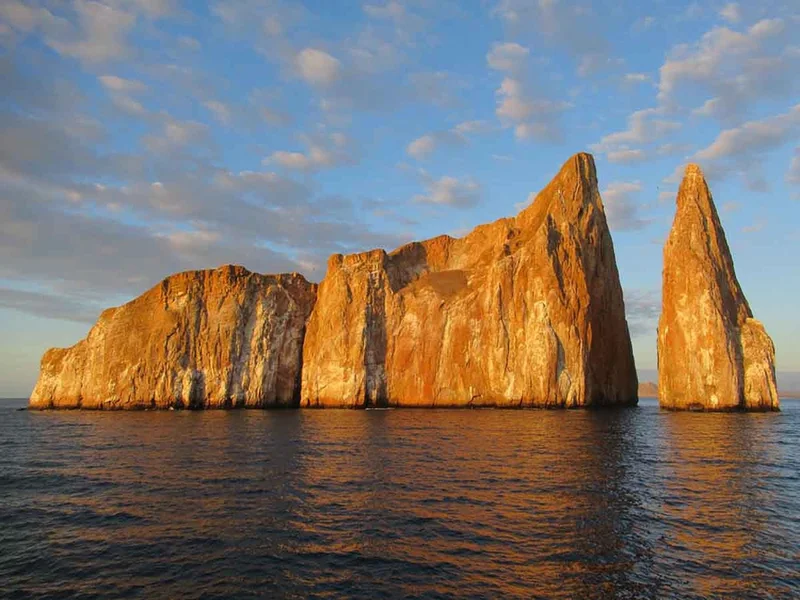
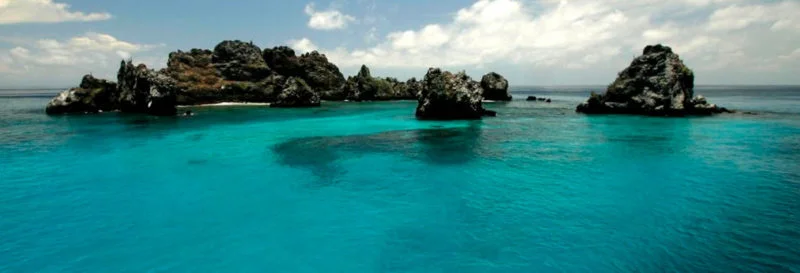
+12
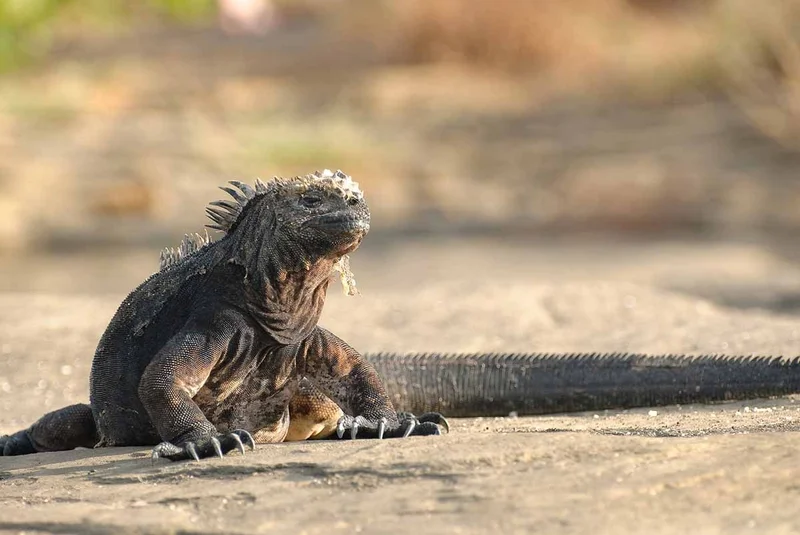
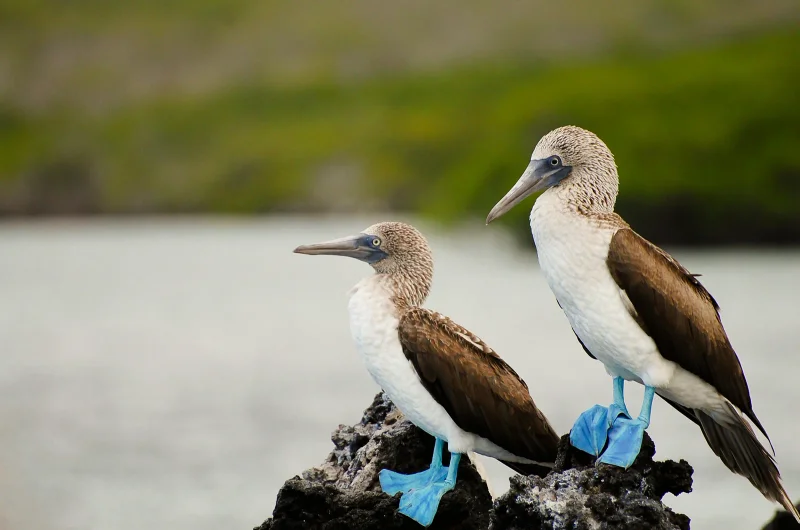
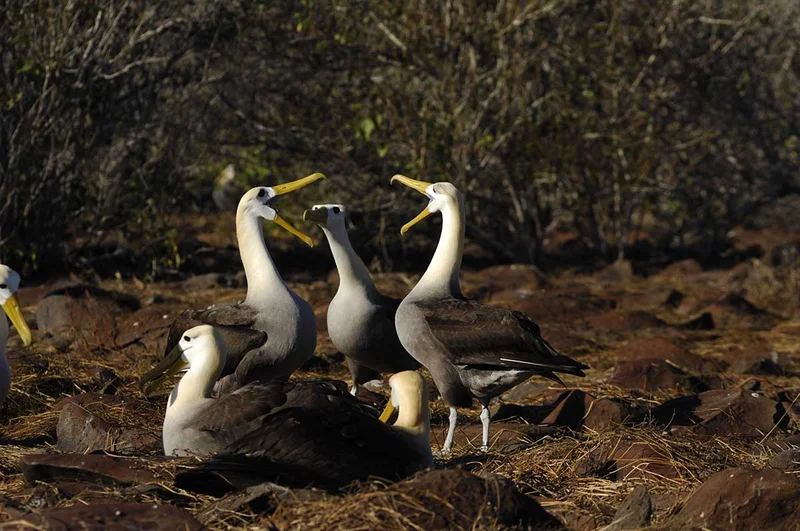
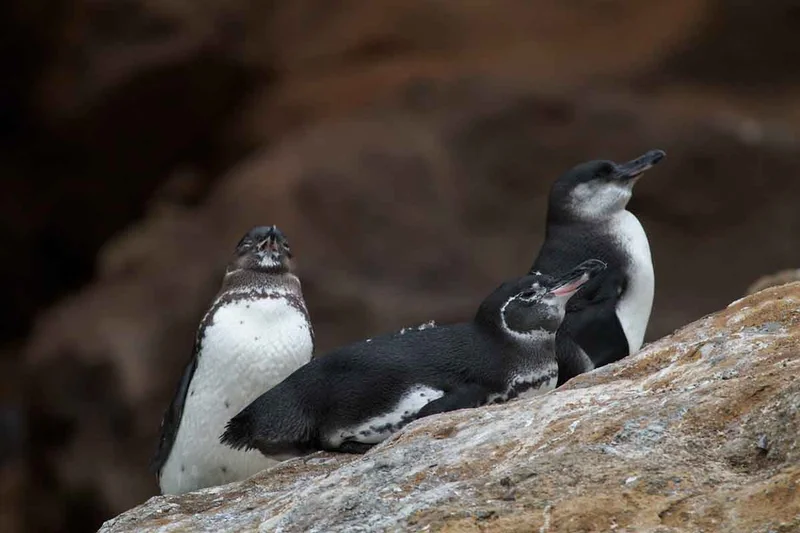
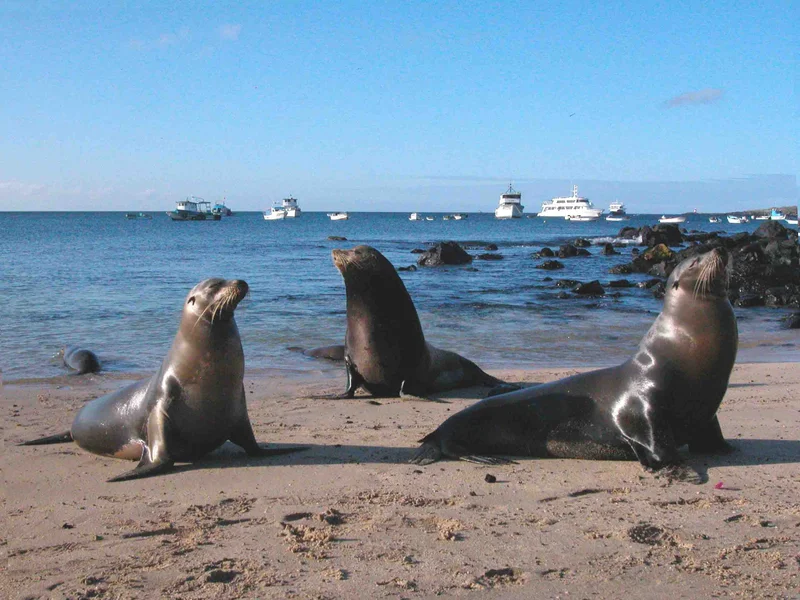
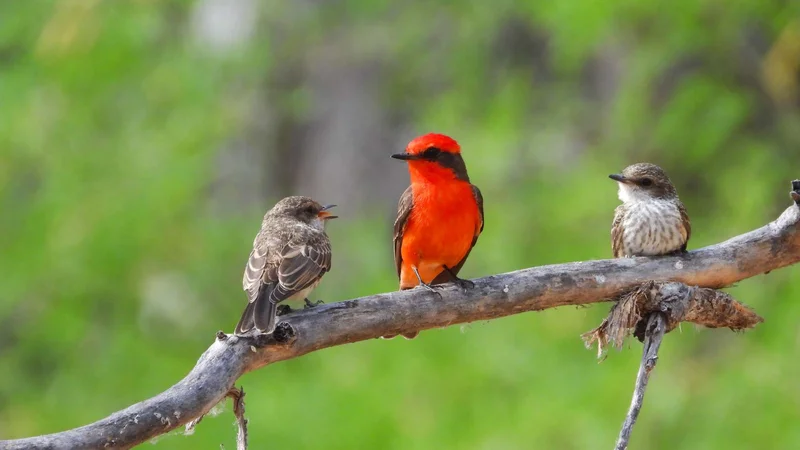
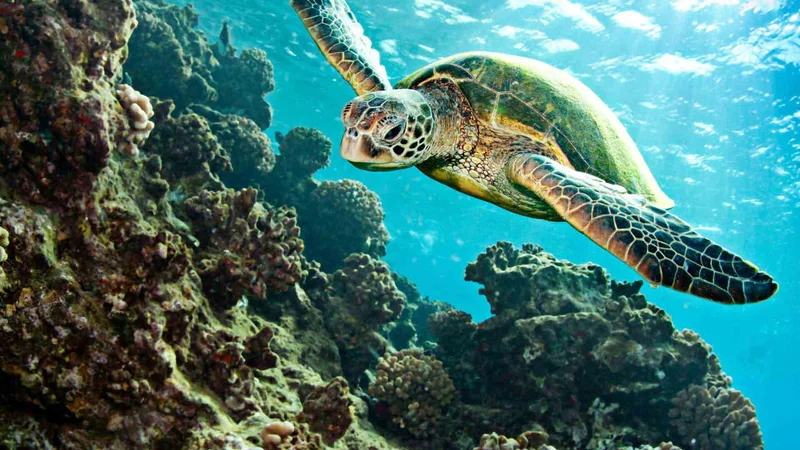
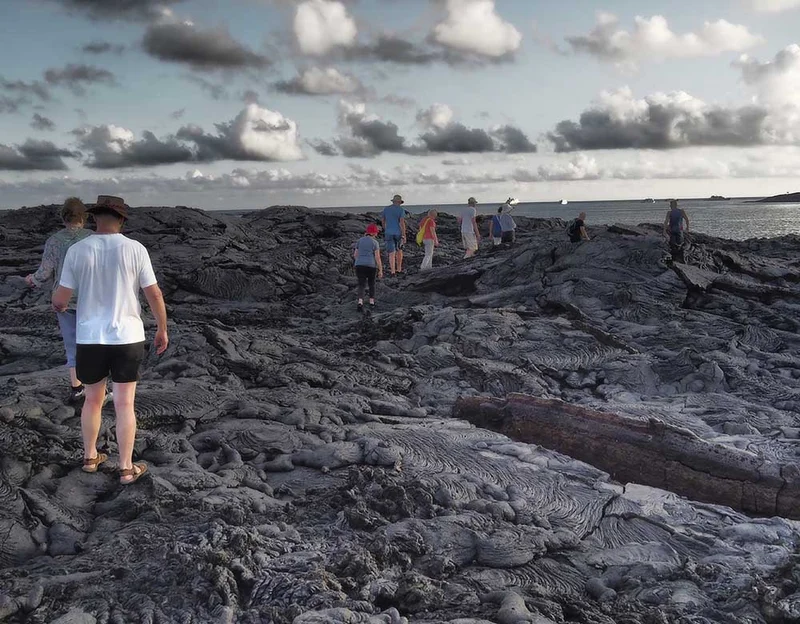
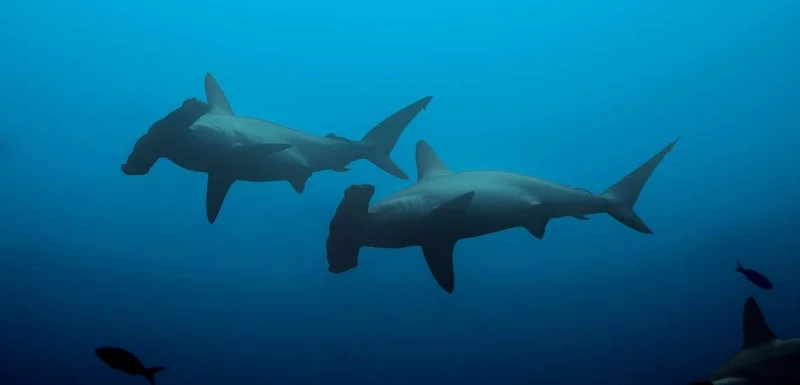
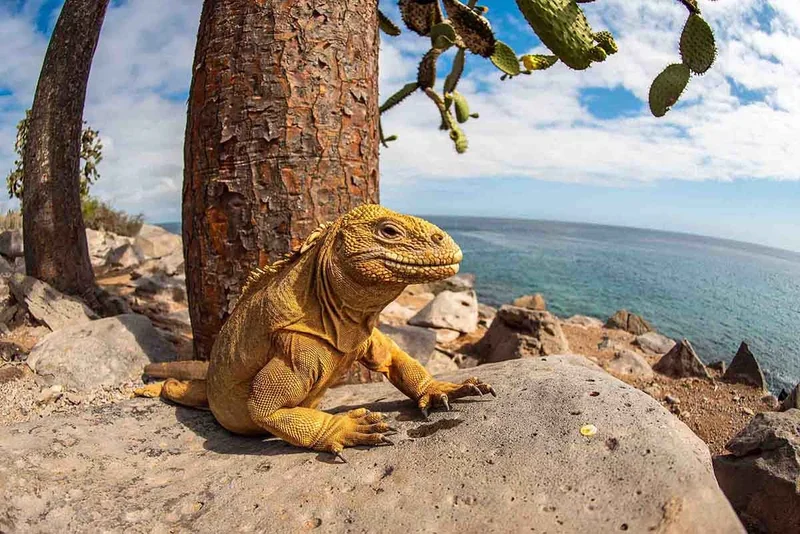
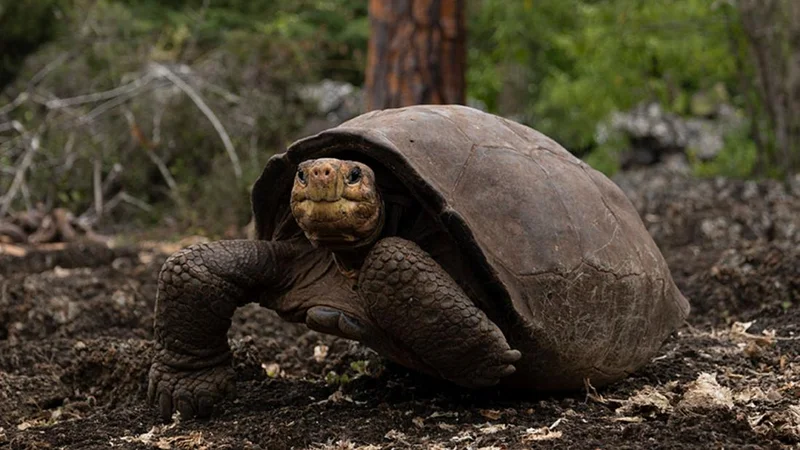
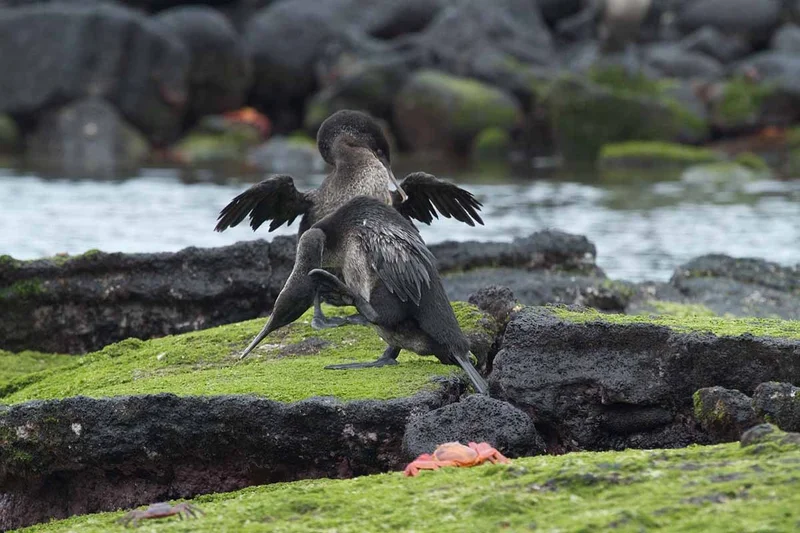
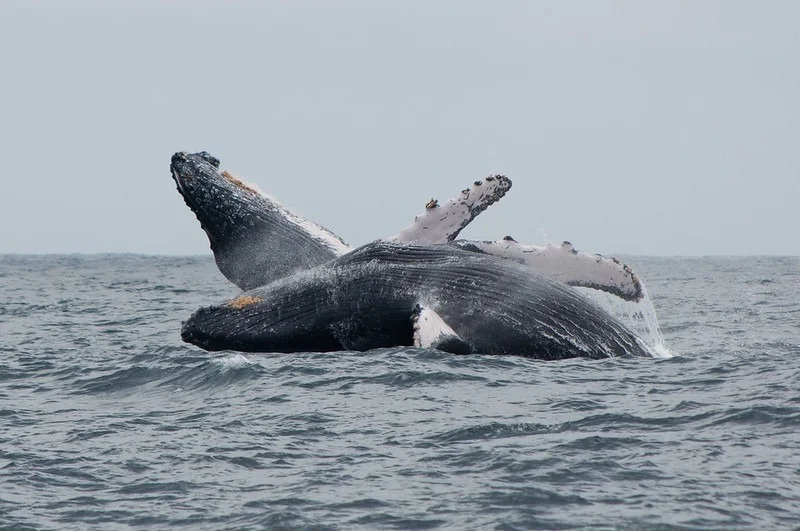
8 Day Galapagos Itinerary Includes
- Scheduled visits and activities with a professional bilingual guide
- All meals on board, snacks, purified water, tea and coffee
- Accommodation in standard cabin / bunk with private bathroom and air conditioning
- Assistance 24/7 during the trip
8 Day Galapagos Itinerary Does not Include
- Air tickets to / from Galapagos from / to Quito, Guayaquil or combined route
- Entrance to the Galapagos National Park US $ 200 p.p. (cash in the Islands)
- Galapagos Control Card US $ 20 p.p. (at the airport before check-in)
- Soft and alcoholic drinks on board; personal expenses, extras and tips guide and crew (cash)
- Rent of snorkeling equipment and wet-suits on board (in cash)
- Travel insurance with medical, cancellation and other unforeseen coverage
- Other services in Continental Ecuador and not specified in the program
8 Day Galapagos Itinerary Highlights
- Swim with turtles, sea lions, tropical fish, manta rays and even penguins
- Walk on a volcanic island that looks like an upturned Chinese Hat
- Paddle through a mangrove surrounded cove and spot mating sea nurtles and reef sharks
- Hike by the blowhole at Punta Suarez and spot hundreds of nesting Nazca boobies
Itinerary Map
Click on the map to navigate the itinerary
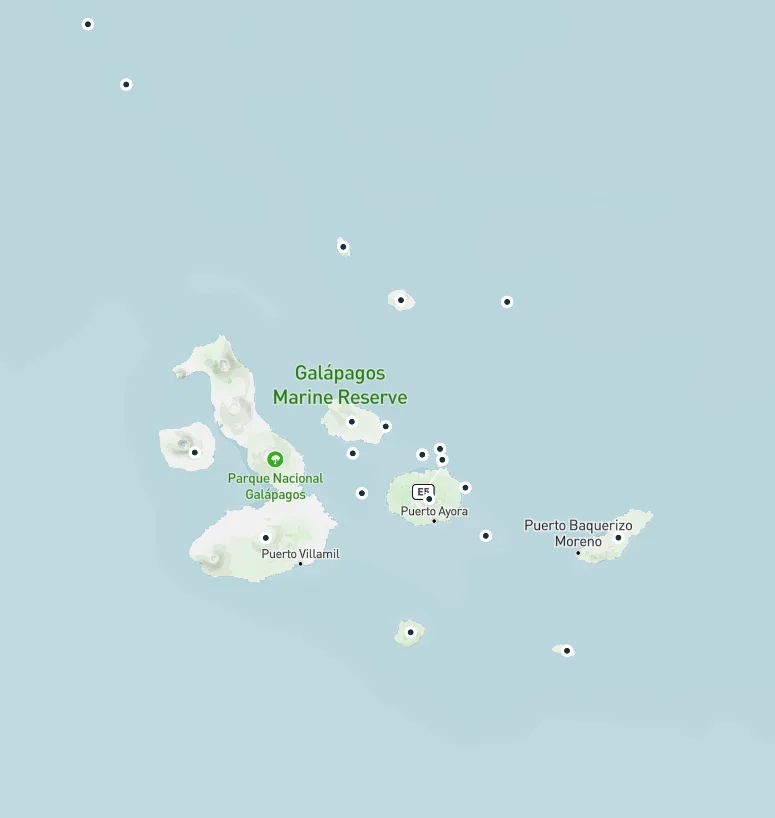
Animals you might see on this itinerary:
0 / 0
More information about the Galapagos Islands you visit in this 8 day itinerary:
Western Galapagos 8-Day Cruise - Nemo I Catamaran
From USD 4250,00
Why travel with us?
Similar Itineraries
Grand Daphne
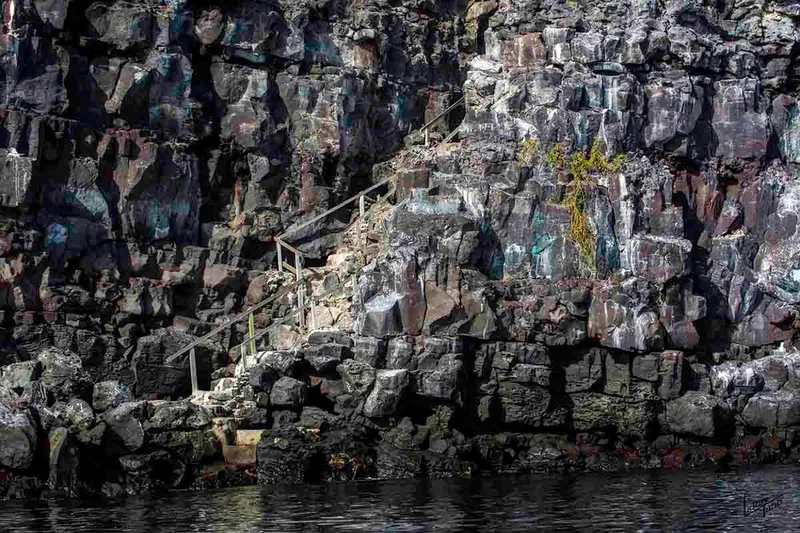
From USD 3689,00 pp
Galapagos Islands
5 Days
Itinerary 5 Days
Carina
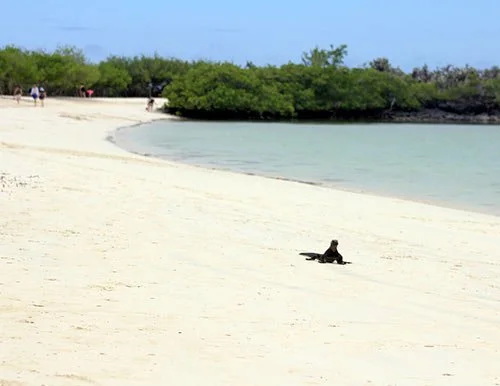
Request a quote
Galapagos Islands
8 Days
Galapagos East 8 Day: Española & San Cristóbal
Natural Paradise

From USD 3245,00 pp
Galapagos Islands
4 Days
Discover The Enchanting Galapagos Islands On A 4 Day Galapagos Cruise
Ocean Spray
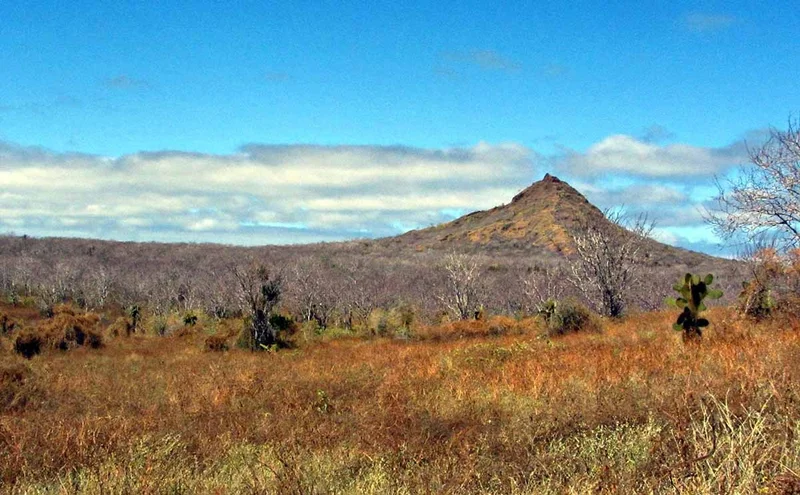
From USD 5190,00 pp
Galapagos Islands
5 Days
Galapagos 5 Days Cruise On Board The Ocean Spray North And Central Islands